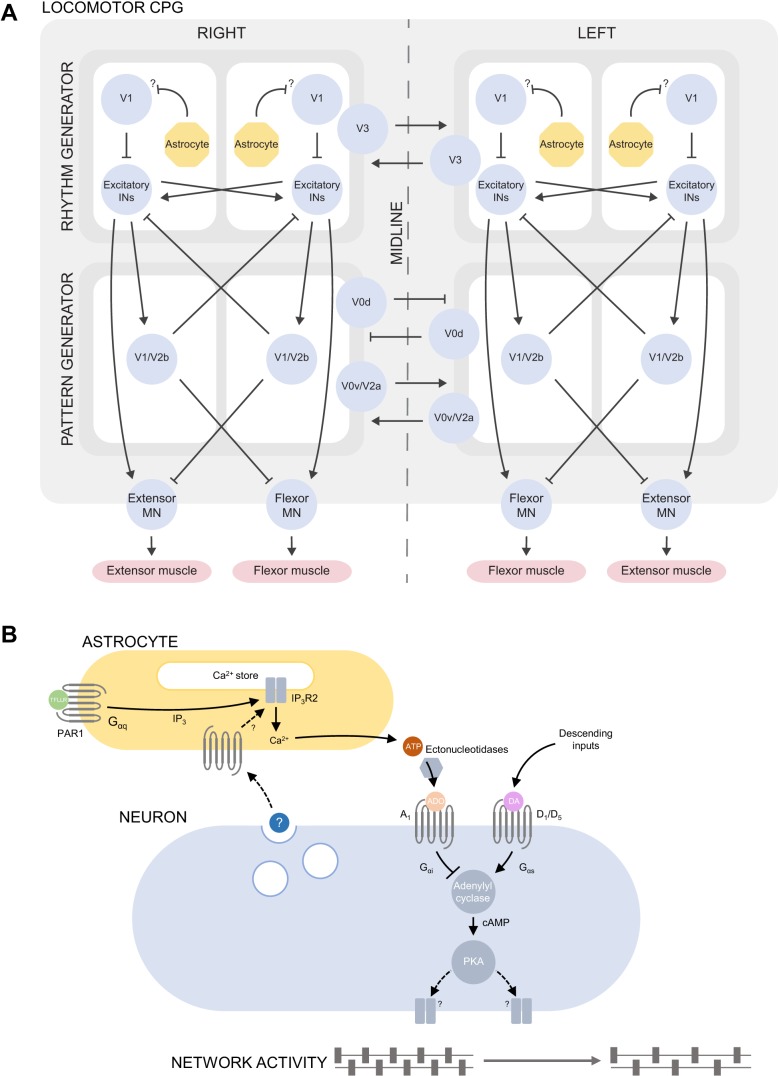Fig. 3.
Schematics illustrating proposed release of ATP-adenosine from astrocytes and inhibition of D1-like receptor signaling within locomotor networks. A: outline of the spinal locomotor CPG as a bilateral network comprising flexor and extensor and rhythm- and pattern-generating modules for the coordination of muscle activation during locomotion. Molecularly defined populations of postmitotic ventral horn neurons (V1, V2a, V2b, V0v, V0d, V3) are represented as blue circles, and some of their proposed interactions are indicated by arrows, signifying excitation, or bars, signifying inhibition. Astrocytes are proposed to modulate the rhythm-generating circuity by exerting an inhibitory effect, via secretion of ATP-adenosine, on an inhibitory population of interneurons that regulates locomotor frequency, possibly the V1 population (see text). For details of the roles of the neuronal populations indicated, see Goulding (2009) and Kiehn (2016). B: ATP is released from putative spinal cord astrocytes during network activity in response to an unidentified neuronal signal and upon experimental activation of the Gαq-linked receptor PAR1 by TFLLR, which is proposed to mimic the endogenous action of neurotransmitters on astrocytic GPCRs. Extracellular ectonucleotidases mediate the hydrolysis of ATP to adenosine, which activates neuronal Gαi-linked A1 receptors to inhibit signaling through Gαs-linked D1-like receptors at the level of adenylyl cyclase. Reduced cAMP production by adenylyl cyclase results in reduced activation of PKA. PKA acts on unidentified targets, perhaps including ion channels and ionotropic receptors, to increase neuronal excitability; PKA inhibition results in a reduced frequency of locomotor-related activity. IN, interneuron; MN, motoneuron.

